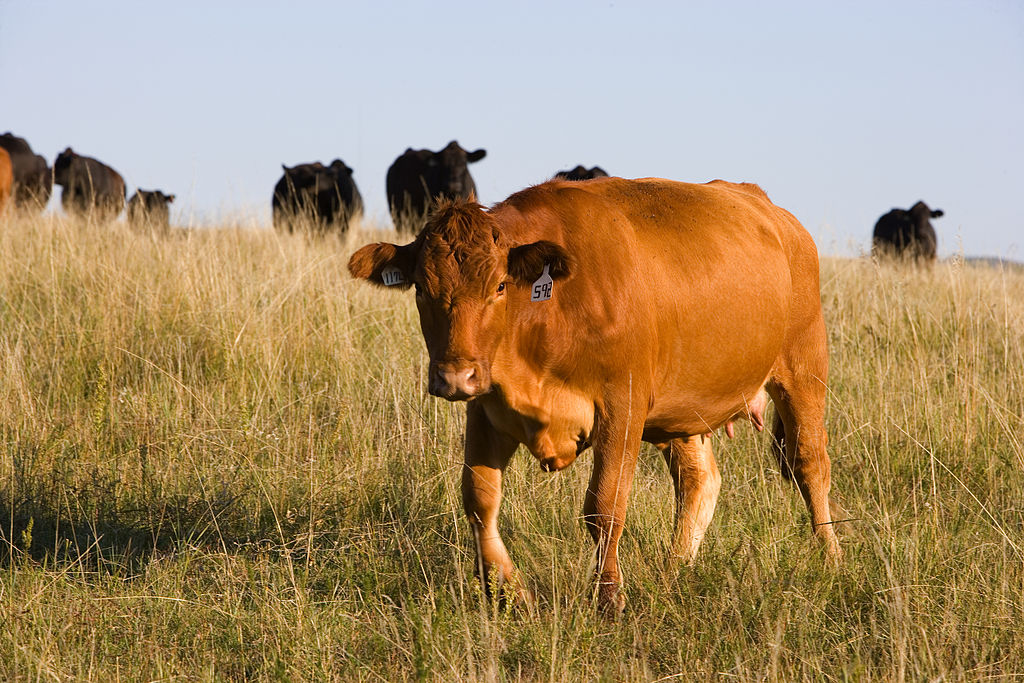Native ranchers could profit from Americans’ insatiable appetite for beef
By Melanie Lenart

Ranchers on tribal nations may benefit from record-high prices for cattle these days—especially if they buy insurance protection to lock in high prices.
That’s the word from Shannon Neibergs, an economist and professor emeritus with Washington State University, who shared the market outlook for producers last week during the online monthly meetings of the Native Climate Working Group.
“The only commodity that I really saw with any upward market energy is beef cattle,” said Neibergs, whose talk covered the market outlook for crops and livestock. “Those repair costs, keeping things running, the labor costs—it’s going to take some management oversight to make sure you come out ahead. With the beef cattle, the price inflation tempers that risk a bit.”
Prices for beef cattle reached an all-time high last month of about $310 per 100 pounds, according to a slide he shared during his presentation. For a typical 550-pound cow, that would translate into about a $1,700 sale.
Meanwhile, consumer demand for beef shows no sign of slowing down even given high prices. If demand does drop, imports could come down before domestic production, he said. In January, the United States imported higher-than-normal (compared to the past decade) amounts of beef—about 500 million pounds, with nearly 160 million pounds of beef coming from Brazil.
Neibergs also encouraged ranchers to consider investing in a type of insurance known as Livestock Risk Protection. Farm Credit Services of America describes this as a “federally subsidized risk-management program designed to insure against a decline in livestock market prices.”
The insurance fee per head of cattle is reasonable compared to potential returns, Neibergs said, as the program allows ranchers to lock in an approximate price before the sale of cattle designated for slaughter.
Vicki Hebb, a rancher and facilitator of the meeting in her role with the University of Nevada-Reno Extension program, said she was emailing her banker right then to talk about this option.
“I have had the difference of one week and lost $30,000 on calves,” she added.
It’s a good time to be in ranching, but perhaps not the best time to launch a ranching enterprise, Neibergs said, noting the current high costs of materials and labor would make it challenging to set up.
For instance, ranchers in Texas could pay about $10,000 for each mile of fencing they need to replace, according to a cattle raisers association in the panhandle, where a wildfire charred nearly 2,000 square miles of grasslands. Individual ranchers are struggling with massive losses. The potential impact on beef prices was considered minimal, though, as many of the state’s cows were in feedlots that were unaffected by the blaze.
Along with ranchers who need to do fence replacements or make other big purchases, the high cost of materials and labor for operations and maintenance will make it challenging for many farmers as well. At the start of this year’s growing season, evidence suggests growers face a tight profit margin that could easily slip into losses.
“The importance of budgeting as a management tool as these cost inflation factors increase, that’s going be key,” Neibergs said. Persistent drought in Montana and parts of the Midwest and Southwest remains a concern.
Those interested in watching the Zoom recording of Neibergs’ presentation or joining future Native Climate Working Group meetings can contact Vicki E. Hebb at vhebb@unr.edu or sign up from the organization’s web page. Group members also exchange information on upcoming events and grants related to climate and sustainability.
With funding from the US Department of Agriculture, the Native Climate project aims “to make climate data more accessible and useful” to tribal nations in the Northern Plains and Southwest regions of the USDA climate hubs. The organization is seeking paid summer interns for climate change reporting, with applications due April 15.
Melanie Lenart is the News and Opinions editor at Native Science Report. Writers interested in contributing stories or perspectives can contact her at mlenart@nativesciencereport.org.
• • •
Enjoyed this story? Enter your email to receive notifications.
